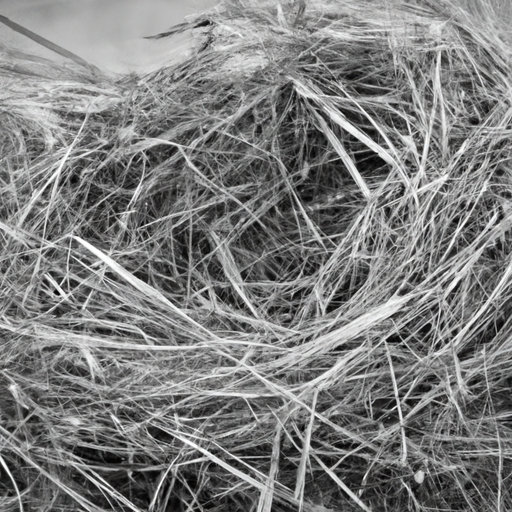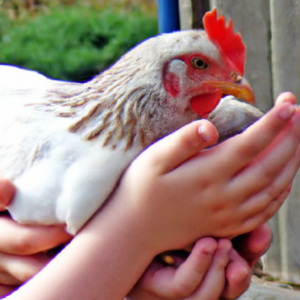
When it comes to selecting the perfect bedding for a broody hen’s nest, you might find yourself feeling a tad overwhelmed with options. Don’t worry, though, because we’re here to help! In this article, we’ll explore different bedding materials and share some expert tips to ensure your broody hen is comfortable and content. From straw to shredded paper, we’ll cover it all, so let’s get started on creating a cozy nest that any broody hen would proudly call her own.
Considerations for Selecting Bedding
When it comes to selecting bedding for a broody hen’s nest, there are several important considerations to keep in mind. The material of the bedding, its absorbency, comfort, availability, and ease of cleaning are all factors that should be taken into account. By carefully considering these aspects, you can ensure that you choose the best bedding option for your broody hen.
Material of Bedding
One of the first considerations to make when selecting bedding for a broody hen’s nest is the material of the bedding itself. There are several options to choose from, including straw, hay, wood shavings, pine needles, and dry leaves. Each material has its own unique qualities and benefits, so it’s essential to consider the specific needs and preferences of your broody hen.
Absorbency
Another important factor to consider is the absorbency of the bedding. Broody hens naturally produce eggs, and these eggs will need a suitable environment to incubate. Bedding with high absorbency can help to prevent moisture buildup in the nest, which is crucial for maintaining a healthy and safe environment for the developing eggs. Adequate absorbency will also help to prevent the growth of mold and bacteria in the nest.
Comfort
Comfort is key when selecting bedding for a broody hen’s nest. The bedding should provide a soft and cozy environment for the hen to sit on and for the eggs to rest in. Opting for bedding that is too harsh or uncomfortable can lead to discomfort for the broody hen and potentially impact the incubation process. So, it’s important to choose bedding that offers a comfortable and inviting nest for both the hen and her eggs.
Availability
Availability is another consideration to keep in mind when selecting bedding for a broody hen’s nest. Depending on your location and access to resources, certain bedding options may be more readily available than others. It’s important to select a bedding material that you can easily source, ensuring that you are able to maintain a consistent and suitable bedding environment for your broody hen.
Ease of Cleaning
Lastly, consider the ease of cleaning when choosing bedding for a broody hen’s nest. While the bedding will need to be cleaned regularly, it’s important to choose a material that is easy to clean and replace. Some bedding options may be more cumbersome to remove and clean, while others may be relatively simple. Opting for bedding that can be easily cleaned and replaced will save you time and effort in maintaining the nest’s hygiene.
Types of Bedding for Broody Hen’s Nest
Now that we have considered the main factors in selecting bedding for a broody hen’s nest, let’s explore the different types of bedding options available. Here are five common types of bedding materials that are commonly used for broody hen nests:
Straw
Straw is a popular bedding option for broody hen nests. It is widely available, easy to work with, and provides a soft and comfortable nest for the hen and her eggs. Straw also has decent absorbency, which helps to maintain a dry environment in the nest. However, it is worth noting that straw may need to be replaced more frequently compared to other materials, as it can become soiled more quickly.
Hay
Hay is another commonly used bedding material for broody hen nests. It offers good absorbency and provides a warm and cozy environment for the hen and her eggs. Hay is readily available in many areas and is relatively easy to work with. It should be noted, however, that hay can sometimes be dustier compared to other materials, so it’s important to consider this if you or your hens have respiratory sensitivities.
Wood Shavings
Wood shavings are a popular choice for broody hen nests due to their high absorbency and durability. They provide good insulation and keep the nest dry, which is essential for maintaining a healthy environment for the eggs. Wood shavings are widely available and easy to clean, making them a convenient option for broody hen owners. However, it’s important to ensure that the wood shavings are not treated with any harmful chemicals or additives that could potentially harm the hen or the eggs.
Pine Needles
Pine needles are a natural and aromatic bedding option for broody hen nests. They provide good insulation, absorb moisture well, and deter pests due to their natural scent. Pine needles are often readily available for free in areas with pine trees, making them a cost-effective choice. However, it’s important to ensure that the needles are clean and free from any chemicals or contaminants that could be harmful to the hen or the eggs.
Dry Leaves
Dry leaves are another natural and readily available option for broody hen nests. They offer good insulation and absorbency and provide a cozy environment for the hen and her eggs. Dry leaves are often abundant in the fall season, and they can be gathered easily from the ground. However, it’s important to select leaves that are free from any pesticides or chemicals that could potentially harm the broody hen or the developing eggs.
Benefits and Drawbacks of Each Bedding Type
Now that we have explored the different types of bedding materials, let’s take a closer look at the benefits and drawbacks of each option:
Straw
Straw offers a soft and comfortable nest for broody hens and their eggs. It is widely available and easy to work with. However, straw may need to be replaced more frequently compared to other materials due to its tendency to become soiled quickly.
Hay
Hay provides good absorbency and creates a warm and cozy environment for the hen and her eggs. It is readily available in many areas. However, hay can be dustier compared to other materials, which may not be suitable for hens or owners with respiratory sensitivities.
Wood Shavings
Wood shavings are highly absorbent and durable. They provide good insulation and keep the nest dry. Wood shavings are easy to clean and widely available. However, it’s important to ensure they are untreated and free from harmful chemicals.
Pine Needles
Pine needles offer natural insulation and absorb moisture effectively. They have a pleasant scent and can deter pests. Pine needles are often available for free, but it’s important to ensure they are clean and chemical-free.
Dry Leaves
Dry leaves provide insulation and absorbency while offering a natural and cozy environment. They are abundant in the fall season and can be gathered easily. However, it’s important to select leaves that are free from pesticides or chemicals.
Maintaining Bedding Hygiene
Maintaining proper bedding hygiene is crucial for the health and well-being of the broody hen and the developing eggs. Here are some essential practices to follow:
Daily Cleaning Routine
It is important to establish a daily cleaning routine for the broody hen’s nest. Remove any soiled or wet bedding and replace it with fresh and dry material. This helps to prevent the accumulation of moisture, ensuring a clean and comfortable environment for the hen and eggs.
Nesting Materials Replacement
Regularly replace the nesting materials to ensure cleanliness and hygiene. Replace all the bedding at least once a week, or more frequently if necessary. This helps to maintain a fresh and odor-free nest for the broody hen.
Preventing Moisture and Mold Growth
Moisture and mold can be detrimental to the broody hen’s nest. Ensure proper ventilation in the nesting area to prevent excessive moisture buildup. Avoid using overly damp or wet bedding materials, as they can promote the growth of mold. Regularly inspect the nest for any signs of mold and remove affected bedding immediately.
How to Prepare the Nest with the Chosen Bedding
Now that you have selected the appropriate bedding material for your broody hen’s nest, it’s time to prepare the nest area. Follow these steps to create a comfortable and suitable nest for your broody hen:
Clearing the Nest Area
Start by clearing the nest area of any debris or old bedding. Remove any feathers, droppings, or other materials that may have accumulated in the nest.
Adding Fresh Bedding
Add a generous amount of fresh bedding material to the nest. Ensure that the bedding is clean, dry, and free from any contaminants that may harm the hen or the eggs.
Creating a Nest Shape
Shape the bedding into a shallow bowl or nest shape. This will provide a secure and cozy space for the hen to sit on and for the eggs to rest in.
Ensuring Adequate Nest Depth
Make sure that the bedding is deep enough to provide proper insulation and cushioning for the eggs. The ideal depth will depend on the size of your broody hen and her eggs, so it’s important to adjust accordingly.
Monitoring and Adjusting the Nest for Broody Hen
Once the nest is prepared with the chosen bedding, it’s important to regularly monitor the broody hen’s behavior and adjust the bedding as required. Here are some tips for effectively monitoring and adjusting the nest:
Monitoring Broody Behavior
Keep a close eye on your broody hen’s behavior. Observe how she interacts with the nesting materials and if she seems comfortable and content in the nest. Pay attention to any signs of distress or discomfort, as these may indicate the need for bedding adjustments.
Adjusting Bedding as Required
If you notice that the broody hen is not settling comfortably in the nest or if the eggs are not staying in place, consider adjusting the bedding. Add more or less material as needed to create a suitable environment for the hen and her eggs. It’s important to ensure that the bedding provides adequate support, insulation, and protection for the developing eggs.
Common Mistakes in Bedding Selection for Broody Hens
While selecting bedding for a broody hen’s nest, it’s important to avoid some common mistakes that can impact the health and well-being of the hen and her eggs. Here are a few mistakes to avoid:
Using Damp or Dirty Bedding
Using damp or dirty bedding can create a breeding ground for bacteria and mold. Ensure that the bedding is clean, dry, and free from any contaminants that could potentially harm the hen or the eggs.
Using Toxic or Irritating Materials
Avoid using bedding materials that are toxic or irritating to the broody hen and her eggs. Some materials, such as cedar shavings, can release harmful fumes that are detrimental to the health of the hen and her eggs. Stick to safe and natural options to ensure the well-being of your broody hen.
Neglecting Nest Maintenance
Regularly maintain and clean the broody hen’s nest. Neglecting proper nest maintenance can lead to a buildup of bacteria, mold, and parasites, posing a risk to the hen and her eggs. Take the time to clean and replace the bedding as needed to maintain a healthy and hygienic environment.
FAQs about Broody Hen Bedding
Here are some frequently asked questions about bedding for broody hens:
How often should I change the bedding?
It is recommended to change the bedding at least once a week, or more frequently if it becomes soiled or wet. Regularly inspect the nest and replace any bedding that shows signs of dirt or moisture.
Is it necessary to use a specific type of bedding?
While there are several options available, the type of bedding used ultimately depends on personal preference and availability. It’s important to choose a bedding material that is safe, comfortable, and suitable for your broody hen and her eggs.
Can I use recycled materials as bedding?
Yes, you can use certain recycled materials as bedding for broody hens. However, it’s important to ensure that the recycled materials are clean, free from any contaminants, and safe for the hen and her eggs. Avoid using materials that could potentially harm the broody hen or compromise the incubation process.
Where can I purchase suitable bedding materials?
Suitable bedding materials can often be purchased at local farm supply stores or pet supply stores. You can also find some options online through reputable retailers. Additionally, some bedding materials, such as straw and pine needles, can be found for free in certain areas.
Conclusion
Choosing the right bedding for a broody hen’s nest is an important decision that can impact the health and well-being of the broody hen and her eggs. By considering factors such as material, absorbency, comfort, availability, and ease of cleaning, you can select the best bedding option for your broody hen. Remember to regularly maintain cleanliness and hygiene in the nest, monitor the broody hen’s behavior, and make adjustments as necessary. With proper bedding selection and care, you can provide a comfortable and nurturing environment for your broody hen’s incubation journey.







